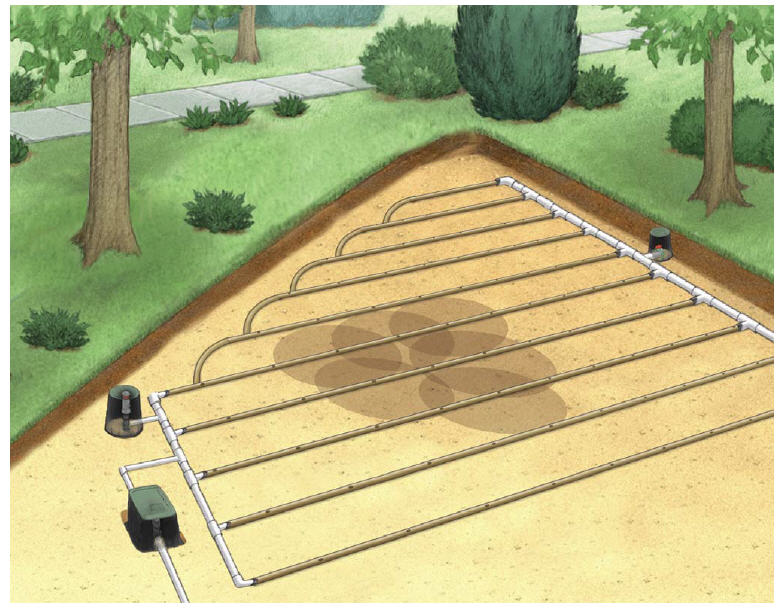
Subsurface Drip Systems as Applied to Onsite Effluent Disposal of Wastewater in California
by Rodney Ruskin, Geoflow, Inc., David Dauwalder, Dauwalder Engineering, Inc., Steven Braband, Biosolutions, Inc.
Subsurface drip disposal (SSDD) of effluent was first used in Hawaii, Georgia and Texas. As summer rainfall areas, these soils in general are very different from those in California. In Georgia and Texas most applications are in very heavy clay soils where conventional drainfields would not function. However, conditions in California are sufficiently different to warrant discussion.
In California, either deliberately or accidentally, all drainfields contribute to vegetative growth. Effluent disposal and irrigation are hydraulically similar but the design requirements are not identical. With effluent disposal, the aim is to dispose of the product within a minimum area, as quickly and safely as possible, and at an approximately uniform rate throughout the year. A disposal system must operate in the rain, while an irrigation system does not. With irrigation, the aim is to optimize the use of water over as large an area as possible, with an allowance made for a wide range of water usage between seasons.
The advantages of using SSDD for effluent disposal are many.
- Health risks are minimized.
- Pollution of storm water runoff is minimized.
- It can be used under difficult circumstances of high water tables, tight soils, steep slopes or wind,
- Disposal of water by means of evapotranspiration by the plants is maximized.
- Opportunities to re-use the cleaned water are increased.
- Deep percolation is minimized.
- Consumption of nitrates by the plant material is increased.
- Has invisible and vandal-proof installations,
- The systems are durable and have a long life expendency.
- It is non-intrusive and allows use of the space while irrigating.
- The system is easily automated.
